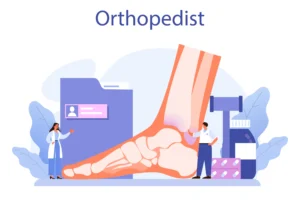 Tendonitis, also known as tendinitis, is a common orthopedic condition characterized by inflammation or irritation of a tendon, the thick fibrous cord that attaches muscles to bones. While tendonitis can affect any tendon in the body, it most commonly occurs in areas subjected to repetitive movements or overuse, such as the shoulders, elbows, wrists, knees, and heels.
Tendonitis, also known as tendinitis, is a common orthopedic condition characterized by inflammation or irritation of a tendon, the thick fibrous cord that attaches muscles to bones. While tendonitis can affect any tendon in the body, it most commonly occurs in areas subjected to repetitive movements or overuse, such as the shoulders, elbows, wrists, knees, and heels.
Understanding the symptoms, causes, and effective treatments for tendonitis is essential for managing the condition and preventing further complications. Today, we’ll delve into the multifaceted nature of tendonitis, exploring its manifestations, underlying causes, risk factors, and evidence-based treatment approaches.
Symptoms of Tendonitis
Tendonitis typically presents with localized pain, tenderness, and swelling near the affected tendon. Common symptoms may include:
- Pain that worsens with movement or activity
- Tenderness to touch along the tendon
- Swelling or thickening of the tendon
- Stiffness or limited range of motion in the affected joint
- Crepitus, a crackling or grating sensation with movement
Causes and Risk Factors
Tendonitis can develop as a result of acute injury, chronic overuse, or age-related degeneration of the tendon tissue. Common causes and risk factors for tendonitis include:
- Repetitive Movements. Activities that involve repetitive motions or excessive stress on a particular tendon, such as typing, gardening, sports, or manual labor, can lead to tendonitis.
- Poor Technique. Improper form or technique during physical activities or sports can increase the risk of tendonitis by placing excessive strain on the tendons.
- Aging. Tendons become less elastic and more prone to injury with age, increasing the risk of tendonitis in older adults.
- Muscle Imbalance. Muscle imbalances or weaknesses in the surrounding muscles can alter biomechanics and place increased stress on the tendons, predisposing them to injury.
- Medical Conditions. Certain medical conditions, such as rheumatoid arthritis, diabetes, gout, and thyroid disorders, may predispose individuals to tendonitis.
Effective Treatment Options
Treatment for tendonitis aims to alleviate pain, reduce inflammation, and promote healing of the affected tendon. Common treatment options may include:
- Rest and Activity Modification. Avoiding activities that aggravate symptoms and allowing the affected tendon to rest and heal is essential for recovery.
- Ice Therapy. Applying ice packs or cold compresses to the affected area can help reduce pain and inflammation.
- Pain Management. Over-the-counter pain relievers such as ibuprofen or acetaminophen may provide temporary relief from tendonitis-related pain and discomfort.
- Physical Therapy. Targeted exercises and stretches prescribed by a physical therapist can help strengthen the muscles surrounding the affected tendon, improve flexibility, and promote healing.
- Corticosteroid Injections. In cases of severe pain and inflammation, corticosteroid injections may be administered directly into the affected tendon to reduce inflammation and provide pain relief.
- Extracorporeal Shockwave Therapy (ESWT). ESWT is a non-invasive treatment modality that uses shock waves to stimulate healing of the affected tendon and reduce pain.
Tendonitis is a common orthopedic condition characterized by inflammation or irritation of a tendon, often resulting from repetitive movements, overuse, or acute injury. By recognizing the symptoms, understanding the underlying causes, and implementing appropriate treatment strategies, individuals can effectively manage tendinitis and prevent further complications.
It is essential to seek medical evaluation and guidance for persistent or severe symptoms to ensure proper diagnosis and personalized treatment. With proper care and treatment, most cases of tendonitis can be successfully managed, allowing individuals to return to their normal activities with reduced pain and improved function.
Picture Credit: Freepik
